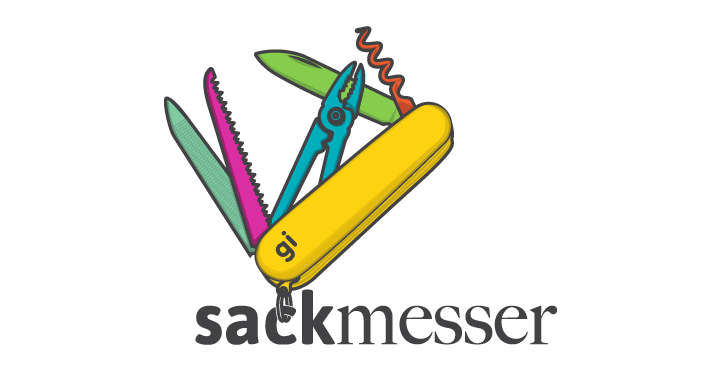Sackmesser provides the core of a web project. It contains configuration in order to get you started.
- js-base:
@goldinteractive/js-base
Gold Features, checkout all features
To install a feature just use make feature-install-[name of the component] for example:
$ make feature-install-modalRespect the proper scope of the dependency (runtime vs. compile time)
$ yarn add dependency-nameand it will add the new utility into the node_modules folder.
Use the Makefile to install all the current project dependencies (yarn & composer):
$ make installMake sure you have Docker installed.
To setup the project you need to change the RECIPE in build to your corresponding project:
- default: Default project (Mostly static html or js app)
- craft: A project setup with Craft CMS
- laravel: A project for laravel
The recipe defined how a project is built and packaged for the deployment.
To build the project we need to use several command line tools and bash scripts. You can have a full list of all the available tasks by typing:
$ makePlease note, that we encourage you to use Docker to develop. So you must always start a docker container before working on the project. To do so, simply execute:
$ make docker-upAll other command will automatically use the docker container instance, so in order to start working on the frontend, use:
$ make watchIf you want to work locally, you can do so by using the Makefile.local.
$ make -f Makefile.local watchThe web container will start with a default port of 8000. If you need to use another port you can
create a .env file in the project root:
DOCKER_PORT_WEB=1337With that configuration the container will use the port given in the .env file.
Quick help for common questions while working on the frontend.
This file is responsible for telling webpack which bundles shall be produced.
Currently there is support for css and js (with optional css) bundles.
It will also generate and reference external resources automatically.
Please note that if you use any css in your js bundle it will generate a standalone css file which must be imported manually.
All assets within frontend/_public are directly copied to the output directory without any futher processing. Except for potential asset hash replacement.
This feature can be used to set the asset hash in static files.
.config/build contains the configuration in which files the constant @ASSET_HASH shall be replaced.
The variable name is ASSET_HASH_TEMPLATE_REPLACE_PATH.
It can be a file or a directory. But the replacement will be performed only on text files - so no binary files will be transformed.
Based on frontend/_public/assets/img/favicons/source.png the different sizes for favicons will be generated.
Make sure the source has a dimension of 512px × 512px. The output can be found in frontend/_public/generated/favicons.
All .svg files in frontend/_public/assets/img/icons will be processed. Firstly SVGs are optimized using svgo. Afterwards all files will be put into one file and a meta information file is being generated.
Currently these file types are handled and can be used as resources:
.gif.png.jpg/.jpeg.svg.ttf.eot.woff.woff2
In order to use them, create a folder in frontend with the given resource category as name. e.g. font or img.
All folders inside of frontend can be automatically used for resource imports - there is no additional configuraiton required.
Resources can be imported with import 'img/file.png'.
To import resources of another type (e.g. background-image), use it in your SASS file as url('~img/file.png').
To setup the project for the deployment you need to edit the deployment configuration files for each environment (production, staging …) you will use:
.config/deployment.*
* = environment (production, staging …)
The deployment is handled by a CI server
So in order to deploy your changes to any environment simply push them into the corresponding release branch.
You are allowed to use --force when pushing to the release branch. Do not use merge or rebase!
The defaults are following branches:
- staging
release/staging - production
release/production
The actual branches are dependent on the project and can change.
Look in the .drone.yml file for the branches key.
To synchronize uploaded files with an environment you have 2 actions:
# Push data to environment
make push-data-%
# Pull data from environment
make pull-data-%
# % = environment (production, staging …)
